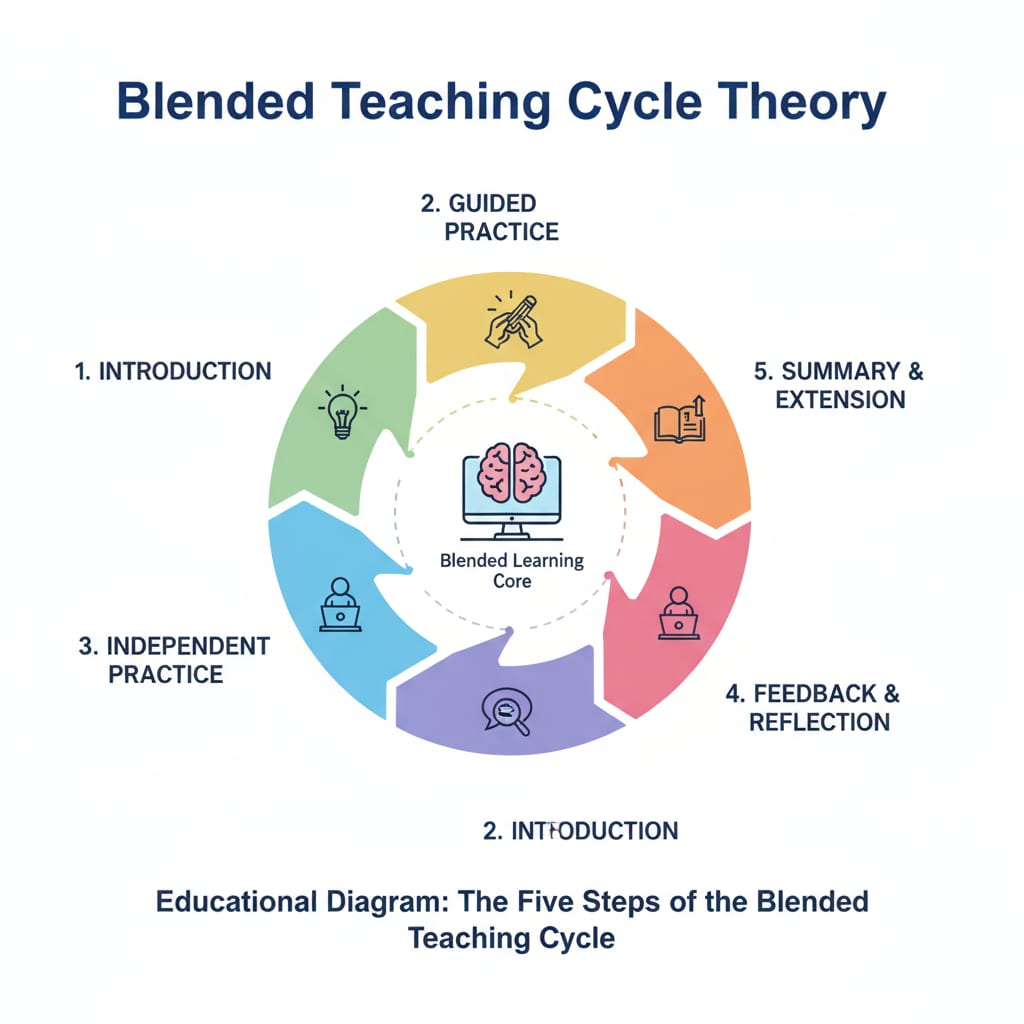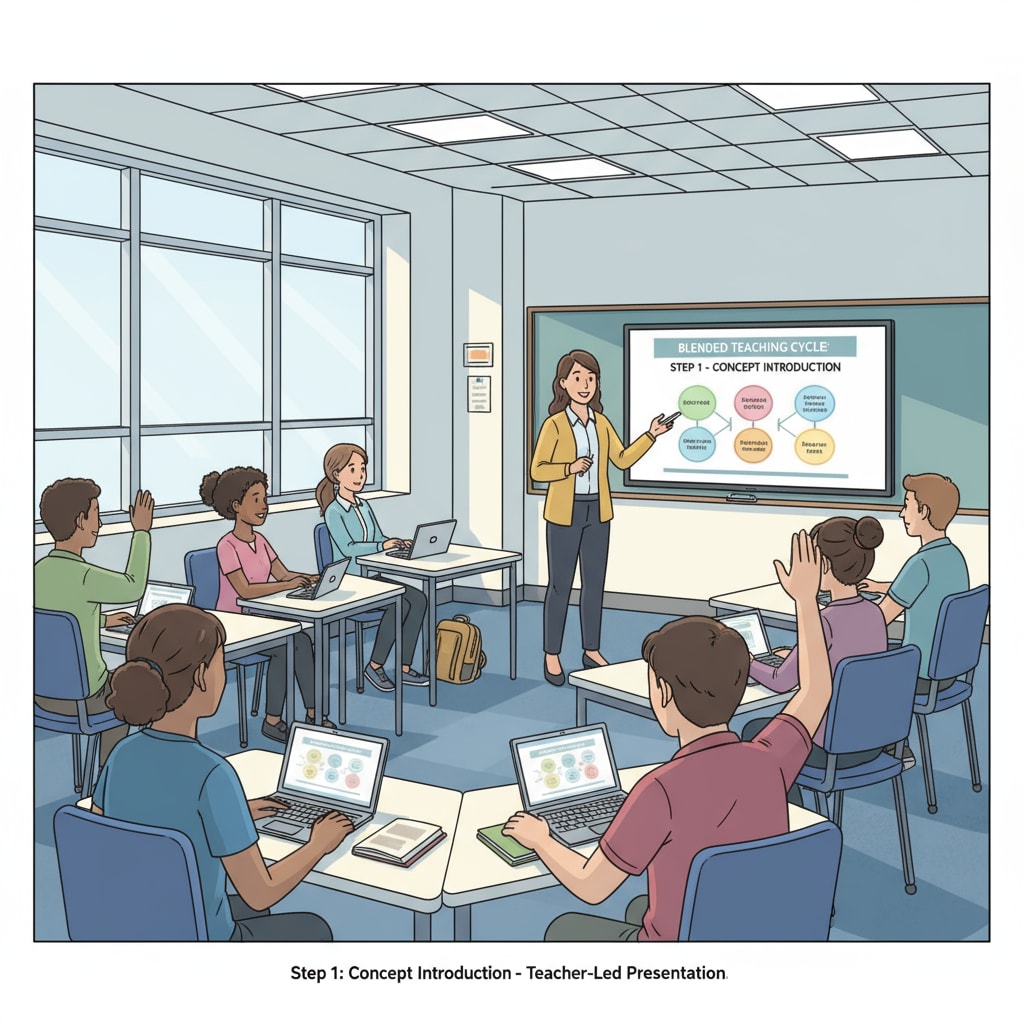The Blended Teaching Cycle Theory, a revolutionary concept in the field of education, seamlessly integrates instructional and guiding teaching methods to form a comprehensive educational model. This theory has the potential to transform the way educators approach teaching and how students engage in learning.

By understanding its structure and theoretical underpinnings, K12 educators can better implement effective teaching strategies.
The Structure of the Blended Teaching Cycle Theory
The Blended Teaching Cycle Theory is structured as a five-step cycle. The first step is “Introduction,” where educators present new concepts or skills to the students. This is mainly an instructional phase, providing the necessary knowledge foundation. For example, in a math class, the teacher might introduce a new formula.

The second step, “Guided Practice,” combines instruction and guidance. Educators offer support as students start to apply what they’ve learned. In a language class, this could involve the teacher guiding students through grammar exercises. The third step, “Independent Practice,” emphasizes student autonomy. Students work on tasks independently, allowing them to further develop their skills. As students progress, the fourth step, “Feedback and Reflection,” becomes crucial. Educators provide feedback, and students reflect on their learning journey. Finally, in the “Summary and Extension” step, the knowledge is consolidated, and opportunities for further exploration are presented.
Theoretical Foundations of the Blended Teaching Cycle Theory
The Blended Teaching Cycle Theory draws on the educational ideas of several renowned psychologists. One of the key influences is Albert Bandura’s social learning theory. Bandura proposed that learning occurs through observation, imitation, and modeling. In the context of the Blended Teaching Cycle Theory, during the “Introduction” and “Guided Practice” steps, students learn by observing the teacher’s demonstrations and instructions, just as Bandura’s theory suggests. Social Learning Theory on Wikipedia
Another important influence is Lev Vygotsky’s zone of proximal development. Vygotsky believed that learning is most effective when it occurs within a certain range of a student’s capabilities. The Blended Teaching Cycle Theory aligns with this idea, especially in the “Guided Practice” and “Independent Practice” steps. Educators can adjust the level of support based on the students’ individual zones of proximal development. Zone of Proximal Development on Britannica
Jean Piaget’s cognitive development theory also plays a role. Piaget emphasized the importance of active learning and the stages of cognitive development. The Blended Teaching Cycle Theory incorporates these ideas by providing opportunities for students to actively engage in learning at different stages of the cycle.
In conclusion, the Blended Teaching Cycle Theory offers a unique approach to education by balancing instructional and guiding teaching methods. Its well-structured five-step cycle and strong theoretical foundations make it a valuable framework for K12 educators. By implementing this theory, educators can enhance student learning experiences and promote better educational outcomes.
Readability guidance: The article uses short paragraphs and lists to summarize key points. Each H2 section provides a clear explanation. The passive voice and long sentences are kept to a minimum, and transition words are used throughout to enhance readability.


